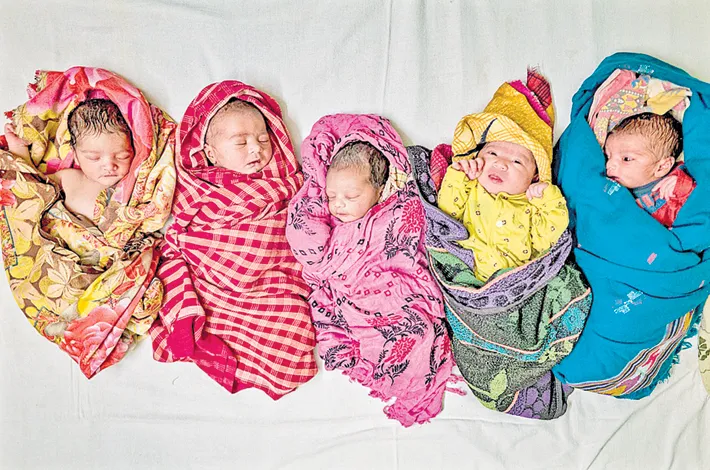What it means and why it matters
14-06-2025 12:00:00 AM

The question arises if fertility is declining, why is the population still growing? The answer lies in what demographers call population momentum. Two decades ago, India had higher fertility, with large number of children being born
India’s fertility rate has been steadily declining over the past few decades, recent data from the United Nations Population Fund (UNFPA) puts it at 1.9—below the replacement level of 2.1. What does this mean for the country? Is it a cause for celebration or concern?
The decline in fertility is largely a result of rising aspirations, improved economic conditions, and greater access to education—especially for women. As more women pursue higher education and join the workforce, and as families aim for a better quality of life, the idea of having fewer children becomes more appealing. The costs of raising children—education, nutrition, healthcare, and overall cost of living—have increased, making large families unaffordable and impractical for many.
The question arises if fertility is declining, why is the population still growing? The answer lies in what demographers call population momentum. Two decades ago, India had higher fertility, with large number of children being born. Those children have now entered their reproductive years. Even if each couple has only one or two children, the sheer size of this generation results in a large number of births. So, population growth continues—though at a slower pace—simply because of the large base.
What does a Total Fertility Rate (TFR) of 1.9 mean? In simple terms, the TFR is the average number of children a woman is likely to have in her lifetime. A TFR of 2.1 is considered the replacement level, meaning each couple has just enough children to replace themselves. India’s current rate of 1.9 indicates that, in the long run, the population will stabilize and may even decline—but not immediately. Stabilization takes time, especially in a country with a large young population.
However, not all states in India show the same pattern. In states like Uttar Pradesh and Bihar, fertility remains high. This is closely linked to lower levels of women’s education, weaker access to reproductive healthcare, and slower economic growth. In such areas, children are often seen as economic assets, and the cost of raising them is relatively low, so families tend to have more.
So, is the declining fertility rate good or bad? It’s a bit of both. On the positive side, it reflects progress in education, healthcare, and economic development. It can reduce pressure on natural resources, public infrastructure and investments. But if the trend continues without proper planning, it could lead to an ageing population, a shrinking workforce, and increased demands on pensions and healthcare systems—challenges that countries like Japan and South Korea are already facing.
In short, the decline in fertility is a sign of development, but it also signals the need for forward-looking policies. We must invest in skilling our young population, creating jobs, and building strong support systems for the elderly. If we act wisely, India can turn this demographic shift into an opportunity for inclusive and sustainable growth.
(Dr A.L. Sharada, Trustee, Population First. She can be reached at alsharada518@gmail.com)








